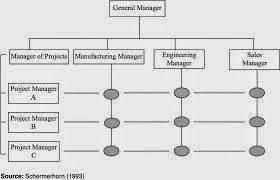Privatization and Economic Performance
1. Introduction
¨ Privatization involves selling state-owned assets
to the private sector. It is argued the private sector tends to run a business more
efficiently because of the profit motive. However, critics argue
private firms can exploit their monopoly power and ignore wider social costs.
¨ Privatization is often achieved through listing the
new private company on the stock market. In the 1980s and 1990s, the UK privatized many
previously state-owned industries such as BP, BT, British Airways, electricity
companies, gas companies and rail network
¨ Privatization of public enterprises have been very
much in the agenda of economic liberalization in contemporary world
specially in developing and countries in transition.
¨ Different modalities of privatization with lofty goals
such as enhancing productive efficiency, allocative efficiency and
to rescue governments from budgetary burdens.
¨ Upon the evaluation of private and public undertaking
in Nepal it was revealed that PE were capital intensive, better in capacity
utilization, profitability and with high economic returns compared to private
undertakings.
¨ For example, privatization of public enterprises aims
at institutional development, increased efficiency, better services, quality
products, employment opportunities, extensive private investment and other.
2. Impact of Privatization on Economic Performance of
Public enterprises in Nepal
A report on
performance of privatized enterprises (1999) spelt out following six objectives
of establishing PEs:
¨ To stimulate economic activities in the country as
there is absence of significant role- play by the private sector in this regard
¨ To avail goods and services to the general people at
fair prices and in abundant quantity
¨ To create employment opportunities in the organized
sector
¨ To substitute imports
and save foreign exchange
¨ To utilize the foreign aid
¨ To develop economic and social infrastructure.
¨ Capital investment
o Sharing of ownership in the industrial and commercial
activities through the private capital investment has been one of the basic
motive for initiating privatization policy in Nepal.
o Privatization can thus be seen as a tool to accumulate
the fragmented capital and utilize it in the main stream of the economy.
o It is also expected that private capital investment
will provide relief to the government in course of budgetary arrangements.
¨ Production situation
o Privatization theory entails increase in production
will as a result of efficiency of the private sector.
o Productive resources would be used and managed in a
better way which contribute in production.
¨ Sales Situation
o Sales is an important indicator to measure performance
of an enterprise.
o It has multi-lateral effects in the performance
particularly on production and profits.
¨ Price Effects
o Privatization has been perceived in a negative way in
the country for a sudden price rise immediately after the privatization of
public enterprises.
o There could be a number of factors influencing in the
price rise such as inflationary pressure, rise in price of inputs and
subsidiaries etc.
¨ Employee/ labor
Productivity
o It is generally envisaged that the employee / labor
productivity would be high in the private sector enterprises as compared with
the public sector enterprises.
o For example, Bhrikuti paper Factory and Hari siddhi
Brick and Tile Factory, the employee /labor productivity was increased.
¨ Capacity, Technology,
Market Expansion and Product Diversification
o Competition is the essence of privatization. It is,
indeed, the basic element which provides the quality of goods and services on
the one hand and competitive price on the other.
o These benefits are virtually to be consumed by the
consumers.
o The privatized enterprises have revealed diversified
picture in relation to their production, sales and profit earning capacities.
¨ Employment
o It has been the preliminary expectation that the
active participation of the private sector in industrial and commercial
activities would increase the scope of activities which would generate
employment opportunities.
o As such employment can be seen as the other indicator
to assess the performance of the privatized enterprises from the national
economic perspective.
¨ Financial
Subsidies
o Public enterprises are remarked as the white elephant
because they rely much on the government financial resources.
o Government is bound to subsidize the financial losses
of these enterprises mainly because of their inefficiencies.
o Government provides subsides to public enterprises in
the form of operating subsidy, transport subsidy and capital subsidy.
¨ Equity Ownership
o Wide ownership in the enterprise is also one of the
major objective of privatization. It therefore concentrated on the capital
market development of the country.
o It is believed that as much as equities are vidided,
ownership of an enterprise would be shared and extended.
3. Conclusion
¨ Privatization, therefore, might not be beneficial
unless it is accompanied by competition in the market place.
¨ Identification
of problems associated with the policy and implementation procedure along with
the environmental aspects and coping with suitable measure would be the ideal
steps towards this end with regard to impact of privatization in developing
countries.
¨ Michael Todaro (1993) rightly concluded that "it
is not sufficient to claim that privatization can lead to higher profits,
greater output, or even lower costs.
¨ The key issue is whether such privatization better
serves the long run development interests of nation by promoting a more
sustainable and equitable pattern of economic and social progress.


Comments